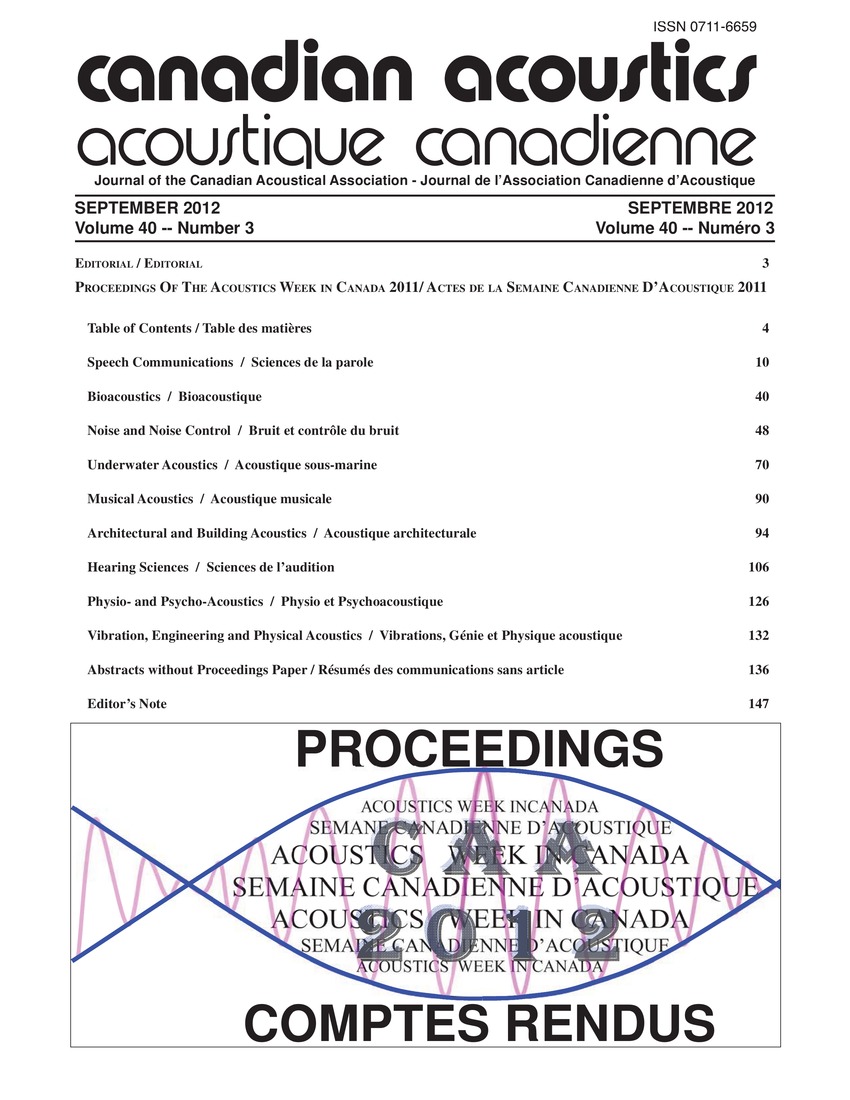60-61 Performance evaluation of lined duct bends -Experiment vs. theory
Keywords:
Acoustic spectroscopy, Climate control, Numerical analysis, Acoustic propagation, Acoustical performance, Empirical relations, Field measurement, High frequency, HVAC system, In-buildings, Lined ducts, Liner material, Performance evaluation, Propagation constantAbstract
Acoustical performances of simple elbow silencers, used in building HVAC systems, have been conventionally evaluated using empirical relations based on laboratory and/or field measurements. The current investigation has made use of COMSOL, a powerful multiphvsics numerical analysis tool and has attempted to provide results based on multi-dimensional analysis. The acoustic propagation in the liner material uses the complex propagation constant and complex density of bulk reacting material. A given acoustic field was assumed at the inlet of the elbow and the outlet is connected to a long anechoic termination. To accommodate high frequency calculation, COMSOL suggests using a length of pipe in front of the elbow within which scattered acoustic field is calculated to provide the required acoustic field at the inlet of the lined (or unlined) elbow.Additional Files
Published
How to Cite
Issue
Section
License
Author Licensing Addendum
This Licensing Addendum ("Addendum") is entered into between the undersigned Author(s) and Canadian Acoustics journal published by the Canadian Acoustical Association (hereinafter referred to as the "Publisher"). The Author(s) and the Publisher agree as follows:
-
Retained Rights: The Author(s) retain(s) the following rights:
- The right to reproduce, distribute, and publicly display the Work on the Author's personal website or the website of the Author's institution.
- The right to use the Work in the Author's teaching activities and presentations.
- The right to include the Work in a compilation for the Author's personal use, not for sale.
-
Grant of License: The Author(s) grant(s) to the Publisher a worldwide exclusive license to publish, reproduce, distribute, and display the Work in Canadian Acoustics and any other formats and media deemed appropriate by the Publisher.
-
Attribution: The Publisher agrees to include proper attribution to the Author(s) in all publications and reproductions of the Work.
-
No Conflict: This Addendum is intended to be in harmony with, and not in conflict with, the terms and conditions of the original agreement entered into between the Author(s) and the Publisher.
-
Copyright Clause: Copyright on articles is held by the Author(s). The corresponding Author has the right to grant on behalf of all Authors and does grant on behalf of all Authors, a worldwide exclusive license to the Publisher and its licensees in perpetuity, in all forms, formats, and media (whether known now or created in the future), including but not limited to the rights to publish, reproduce, distribute, display, store, translate, create adaptations, reprints, include within collections, and create summaries, extracts, and/or abstracts of the Contribution.


